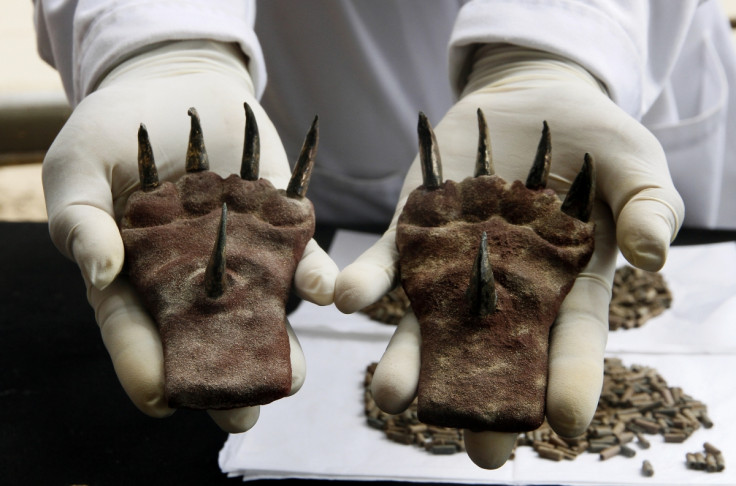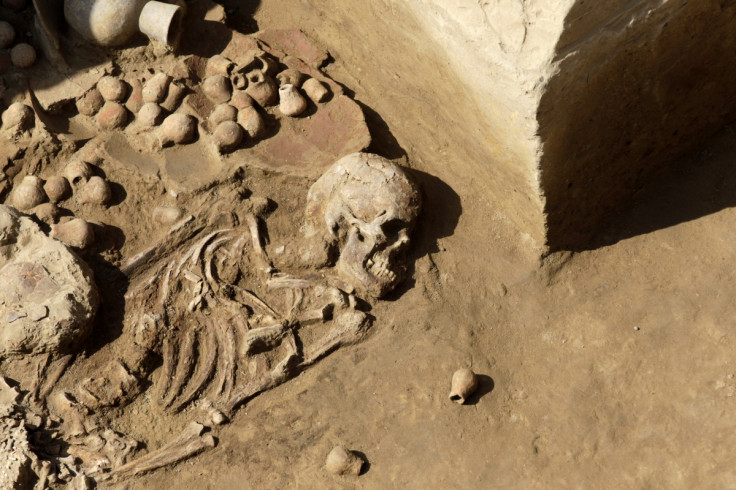Archaeologists Unearth 1,500-Year-Old Peruvian Combat Claws

Archaeologists have uncovered a set of sharpened metallic claws while excavating the tomb of a nobleman from a pre-Inca civilisation.
Scientists believe the claws may have been attached to a full body costume, which played a part in ritual combat for an ancient civilisation called the Moche.
They speculate that a ritual battle was fought between two males, in which the winner was given the claws as a victory prize. The unfortunate loser was then sacrificed to the gods.
Also found at the archaeological site of the Huaca de la Luna, near the city of Trujillo, were a sceptre, earrings and a mask.
"The sceptre signifies power; the earrings, status; and the ceramic piece is typical of an elite personage," archaeologist Santiago Uceda told El Comercio newspaper.

A nobleman's skeleton was also found in the tomb. The finds will be taken to the United States for further scientific examination.
More tests and research will help determine the artefacts' age and use.
The archaeological site of Huaca de la Luna, or Temple of the Moon, was part of the ancient Moche capital, built of millions of adobe blocks between the first and eighth centuries AD in northern Peru.
The Moche worshipped many gods, and there are theories that they carried out regular blood sacrifices, possibly to guarantee good weather. Experts have speculated that victims may also have been held and tortured for several weeks before being sacrificed.
John Verano, a professor of anthropology at Tulane University, believes that some parts of the victim were eaten in ritual cannibalism. Excavations of Moche temple plazas have found groups of people sacrificed together. The skeletons of young men were excarnated – the practice of removing flesh and organs from a body.
The sacrifices may have been associated with rites of ancestral renewal and agricultural fertility.
Moche iconography features a figure which scholars have nicknamed the "Decapitator" or Ai Apaec; it is frequently depicted as a spider, but sometimes as a winged creature or a sea monster. When the body is included, the figure is usually shown with one arm holding a knife and another holding a severed head by the hair.
It has also been depicted as "a human figure with a tiger's mouth and snarling fangs".
© Copyright IBTimes 2025. All rights reserved.





















